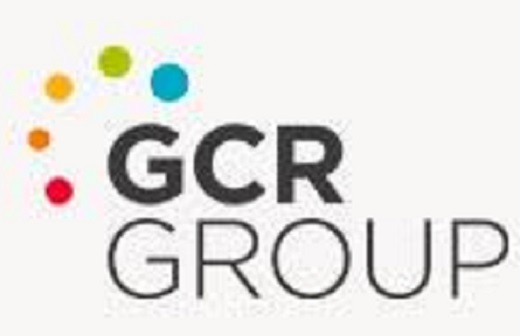Circular-economy – Plastic-waste – PLA 20-10-2022 - Arhive
Circular-economy – Plastic-waste – PLA
Crude Oil Prices Trend

Crude Oil Prices Trend Polyestertime
Sukano, a global specialist in the development and production of additive and colour masterbatches and compounds for polyesters, biopolymers, and specialty resins, and Emery Oleochemicals, a global manufacturer of natural-based chemicals made predominantly from natural oils and fats, announced the launch of their jointly developed PET antifogging compound for direct food contact PET packaging.
Two years of intensive testing and simulations of end use applications in real life scenarios in research and development laboratories resulted in this new antifogging compound. It is formulated to be used at 100% in cold applications to prevent fogging in packaging surfaces.
The product is designed for all kinds of Coex-films (rigid and oriented) having Sukano´s co-polyester-compound in one cap-layer of a film extrusion line A/B structure and PET as core-layer. The resulting product performance is so robust that, even after orientation in several different ratios, the antifogging function remains active and integral, and the film remains transparent.
The challenge of existing technologies
Fogging, or the undesired formation of small water droplets on the surface of films, is a common problem when packing moisture-containing products such as fruit, vegetables, or meat in a tight container. When the water condenses on the surface, it often forms droplets due to the lower surface tension of plastic materials. These droplets ‘fog’ the film and hinder a clear view into the packaging. This not only makes packed food look less fresh and less attractive, but sensitive applications can even be damaged or have their shelf life reduced due to the presence of water droplets.
Antifogging agents solve these issues by inhibiting the formation of water droplets through a homogeneous, transparent water layer. However, the PET food packaging industry is longing for an antifog performance in the form of a compound that can be used in their packaging materials to replace the painful existing coating process.
Antifog coatings are well known and in use but have the downside of adding another operational step to filmmaking. And typical solution-based coatings are inactivated when the surface is washed. As an internal additive in plastics, antifog additives work on polyolefins due to the migration readiness of the polar additive in the nonpolar polymer and the low glass-transition temperature. However, polyolefins have limitations in recyclability and gas barrier performance. PET, on the other hand, is a well recyclable packaging material with good barrier performance and transparency. It is an extensive understanding of polyesters, molecule design and packaging processes that worked as the foundation for this new antifog compound for polyester packaging applications.
Partnership driven by specialised companies to overcome the challenge
Antifogging agents are already common products in the portfolio of Emery Oleochemicals’ Green Polymer Additives business. “However, additives that work well in flexible vinyl meat wrap films or polyolefin films do not necessarily work well in PET,” says Dr. Annika Heinrich, Technical Development Manager at the production site in Loxstedt, Germany. “Polarity, crystallinity and other physical or chemical characteristics of the base polymers are too different, and the additive molecule design needs to take that into consideration.” “At a very early stage, we understood that to be successful in producing effective antifogging agents for PET we must find a strong masterbatch specialist partner,” adds Dr. Christian Mueller, Global Technical Market Manager by Emery Oleochemicals´ Green Polymer Additives. “Antifogging for PET is a very challenging application in polymer additives, and Sukano is one of the most renowned companies when it comes to developing functional additive masterbatches and compounds. Sukano’s significant experience creating state-of-the-art masterbatches and compounds for PET applications made them an ideal fit for this joint development project.” The key overall benefits of this new internal antifogging agent compound for PET are transparency, durability, and homogenous effect associated with easy handling, since no additional machinery investment is required to make it work. Beyond this, customers will be able to minimize any material wastage.
“Internally added antifogging agents are known to create processing issues in PET such as a strong viscosity drop of the polymer melt. Clouding of the final article is another obstacle”, states Christian Schanzer, Global Product Manager of antifogging additives compounds at Sukano. That’s why Emery Oleochemicals and Sukano decided to bring together their unique specializations into a collaboration to overcome the challenge.
“Emery globally masters the development and production of Loxiol antifogging agents. Our partnership combined a specialist in designing internal antifogging agents’ molecules with Sukano´s expertise in masterbatches and compound applications and processing of polyesters to make it possible to incorporate such long desired functionality directly into the plastics material in the compounding step,” reinforces Mr Michael Kirch, Global Head of Research and Development at Sukano.
Recyclability: innovation principles respected from cradle to cradle
The compound additive was tested in PET lidding films applications, PET clam shells and thermoformed lids and trays. The final parts were then shredded, ground, washed and submitted to additional heating conditions, simulating the critical recycling steps of a PET tray dedicated recycling stream according to the Petcore TCEP protocol.
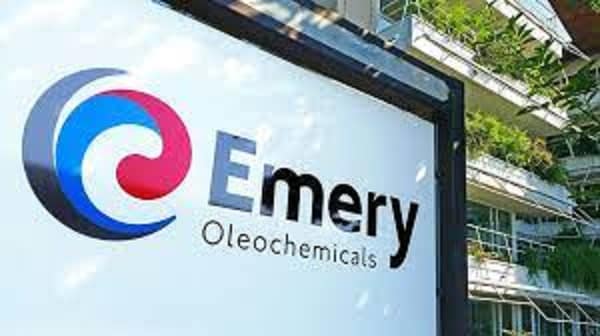
- Project Electra will reduce CO2 emissions by up to 21,000 tonnes per year at INOVYN’s site in Rafnes
- The project – which just entered its industrial demonstration phase – builds upon groundbreaking technology that fully electrifies the production of vinyl chloride
- Together with ongoing project Aquarius, Electra will allow for a 40% reduction of INOVYN’s CO2 production in Norway
INOVYN, an INEOS company, will develop and install new world leading technology to electrify the production of vinyl chloride at the Rafnes site, making it possible to replace fossil energy with renewable electricity. The project has been named “Electra”.
“Project Electra will reduce CO2 emissions from the operations at Rafnes by up to 21,000 tonnes per year”, explains Nils Eirik Stamland, Project Director and chairman of INOVYN Norge. “The project is part of a roadmap for the stepwise decarbonisation of our activities in Norway in which the use of renewable hydropower will play an important role.”
On 23 August 2022 Enova announced that it would support Electra with an investment of 138 Million NOK (ca 14 Million €), subject to INEOS decision to go ahead with the project. In Enova’s press release their CEO Nils Kristian Nakstad said: “This is a major investment that will move INOVYN’s Norwegian operations closer to the goal of net zero emissions in 2050 whilst contributing to the required technology development in the Norwegian petrochemical industry.” The Minister of Climate and Energy in Norway, Espen Barth Eide, was also quoted in Enova’s press release, saying: “It is important and good that companies like INOVYN, goes ahead and show what’s possible and that we need more of this type of projects.
INEOS has now approved the next phase of the project with the clear intention to construct the groundbreaking electrical reactor at industrial demonstration scale.
Important steps to fulfil INEOS’ commitment to carbon neutrality roadmaps
In July 2021 INEOS chairman Sir Jim Ratcliffe announced that all INEOS businesses were developing roadmaps – based on real action plans that can be supported – to deliver net zero emissions across all of our operations by 2050, whilst remaining profitable and staying ahead of evolving regulations and legislation. Using 2019 as the reference year, INEOS are targeting a reduction of over 10% by 2025 and over 33% by 2030, the one-third mark on the road to net zero.
In parallel with project Electra, INOVYN is already well advanced on project Aquarius, which will see the installation of a 20 MW hydrogen production facility in Rafnes. The combined effect of projects Electra and Aquarius will be a ca 40% reduction of INOVYNs CO2 emissions in Norway.
Geir Tuft, INOVYN CEO adds: “The plans require the development and testing of new, innovative technology. Enova’s support is crucial for us to carry out this type of ambitious project as early movers and hence achieve our climate goals.”
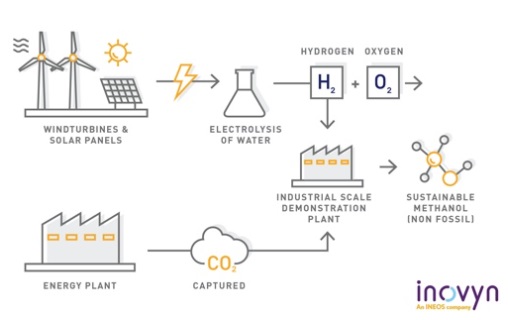
-Bioplastics industry gathers at conference in Berlin
The European Bioplastics (EUBP) Conference will take place on 6/7 December 2022 in Berlin. It is already the 17th edition of the business and networking event for the bioplastics industry. Attendees will also be able to join the conference online, as it will be held in a hybrid format.
The big picture, as formulated in the European Green Deal and its related strategies, is quite clear: decrease the dependence from fossil resources and reduce CO2 emissions to become climate neutral by 2050. This requires Europe’s transition to a circular economy which makes a maximum use of its resources, including waste. What can bioplastics contribute to help to achieve these ambitious goals? The role of bio-based plastics in tackling fossil carbon dependency and reducing CO2 emissions are becoming increasingly well understood across the EU Member States. The same applies for the importance of biodegradable and compostable plastics in recovering organic waste. The speaker line-up showcases just how high up bioplastics are on the agenda of brands, manufacturers, and policy makers, alike.
This year’s policy session will be opened with a keynote by Christian Holzleitner, Head of Unit responsible for land economy and carbon removals at the European Commission’s Directorate-General for Climate Action. He will highlight the importance of sustainable carbon cycles, with a special focus on the role of bioplastics. Further speakers include Silvia Forni, DG ENV, European Commission and Jorge Cristobal Garcia, Joint Research Centre, JRC, European Commission.
Attendees of the 17th EUBP conference will also have the opportunity to participate in sessions covering best practices in food waste collection, a global perspective on standardisation, and end-of-life benefits of bio-based and compostable plastics. This year’s panel discussion, another programme highlight, will discuss the role of compostable plastics in the circular economy. Further sessions will focus on innovative applications towards sustainability, recent advances in bioplastics packaging, and on new developments in the field of bio-based building blocks.
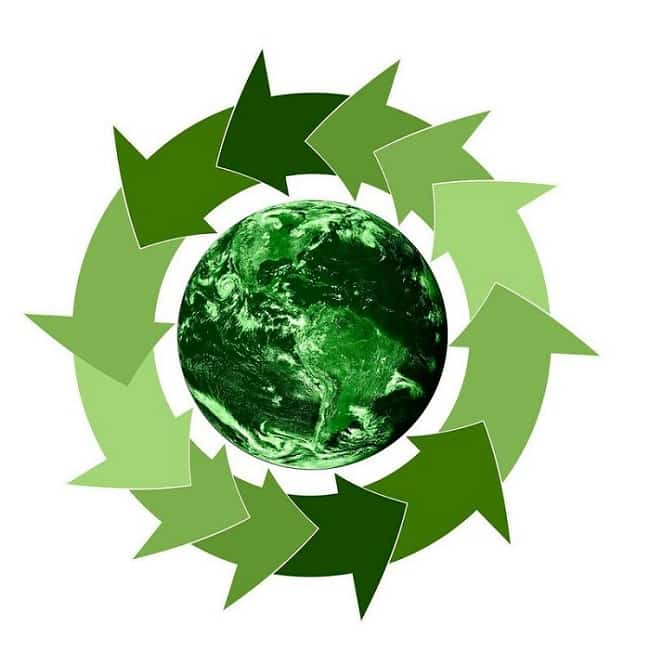
-PLA successfully sorted from municipal mixed plastic waste (again)
In August 2022, TotalEnergies Corbion and Tomra Recycling embarked on a realistic, industrial sorting test with the goal of determining the sortability of PLA from municipal mixed plastic waste.
The companies used a Near Infra-Red (NIR) sorting machine, for the test. The outcome was clear: once again, sorting PLA from other plastics waste proved to be both easy and straightforward.
PLA trays mixed with other post-consumer plastic items were able to be recovered in full, with very high purity at the Tomra centre in Mülheim-Kärlich, Germany.
It was also tested what happened when sorting out just the PET bottle fraction from the mixed plastics waste stream. Again, no PLA trays ended up in the PET stream.
“Plastic waste collectors and sorters know that using the infrared technology, PLA plastic products can easily be sorted from other municipal waste,” said Jürgen Priesters, SVP TOMRA Feedstock. “In closed loop environments, where PLA bottles and PLA cups are exclusively used, the amount of PLA is sufficiently high to also make it economically feasible to collect, sort and clean the PLA.”
TotalEnergies Corbion is already actively collecting used PLA products from closed loop systems and pre-consumer waste, which serves as feedstock from which rPLA is made, preventing the material from ending up in landfill or being incinerated and reducing land use and the need for biomass for the production of virgin PLA. Today, Luminy rPLA, containing 20% post-industrial and post-consumer PLA waste is already commercially available.
Having once again confirmed, in collaboration with Tomra, that PLA can be effectively sorted from other municipal plastic waste using existing separation equipment, it has once again been shown that claims that PLA contaminates PET recycling streams are sheer nonsense, François de Bie, Senior Marketing and Supply Chain Director at TotalEnergies Corbion.
“Many other studies, as cited in our white paper about end-of-life options for PLA, have confirmed exactly the same. In short, no technical barrier exists that prevents an effective separation of PLA from other plastic waste.”
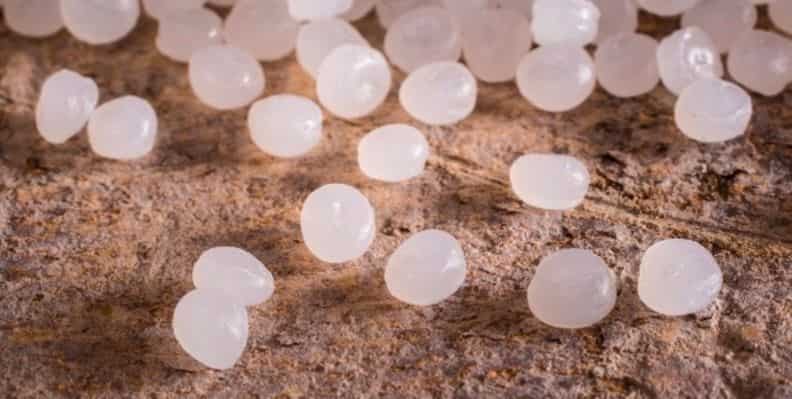
-Plant-Based Face Masks Granted Emergency Use Authorization by FDA
Precision Eco procedural masks are made with renewable crop resources and are expected to help reduce CO2 emissions by 55%.
Precision ADM (PADM) Medical Group of Companies has earned Emergency Use Authorization (EUA) from FDA to market Precision Eco face masks for use in healthcare and medical settings in the United States. Described by the company as the world’s first plant-based, procedural masks with ear loops, Precision Eco masks are expected to help reduce the environmental impact of single-use disposable face masks, as most disposable personal protective equipment are made of petroleum-based, nonbiodegradable polymers.
The Precision Eco compostable plant-based procedural masks are made using Ecofuse plant-based materials manufactured by Roswell Textiles. The masks are produced using high-purity polyactic acid (Luminy PLA) supplied by TotalEnergies Corbion. PLA is a biobased and biodegradable polymer made from annually renewable crop resources and offers a reduced carbon footprint compared with traditional plastics, according to a news release.
Industrially compostable, Ecofuse materials are expected to help reduce the CO2 emissions by approximately 55% compared with using conventional petroleum-based masks. Precision Eco procedural masks generate carbon credits as a result of the net carbon reduction, PADM Medical reported. The Precision Eco masks are also USDA certified biobased products under the USDA BioPreferred Program with a biobased content of 82%.
“The EUA on the Precision Eco product is a milestone. It is a reward to our commitment to making eco-conscious products to support the health and wellness of all individuals and our planet,” said Martin Petrak, PADM Medical Group CEO, in the press release.
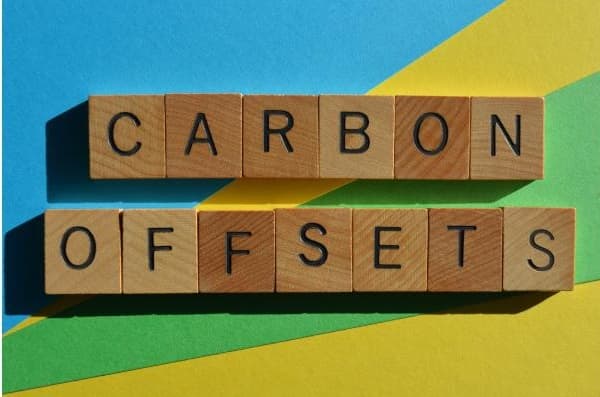
-Arkema announces a new series of recycled high performance polyamides
Produced under the Virtucycle® program at Arkema’s custom recycling center In Italy, partially or fully recycled Rilsan® polyamide 11, Rilsamid® polyamide 12, and Pebax® polymers are now being commercialized.
Arkema’s Virtucycle® program places the advanced materials designer at the center of a virtuous cycle to source, recycle, and recertify advanced polymers. In addition to being the specialty recycler, Arkema plays the role of matchmaker among its customers while playing an optional key role in eco-designing the finished product produced from the recycled material.
By the end of this year, Arkema aims to offer several SCS* certified grades that meet critical performance standards while also offering a traceable supply chain. Detailed LCA data packages will be available upon request. The grades are produced at Arkema’s custom mechanical recycling center for advanced polymers in Italy using only renewable energy. In 2021, Arkema acquired Agiplast, a specialist in the recycling of high performance polymers.
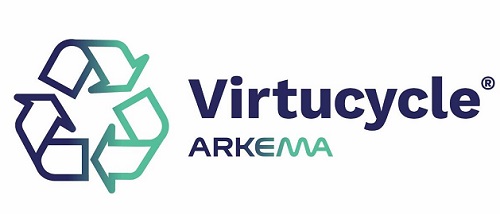
-Processing recyclate? Reifenhäuser Blown Film has the solution
The line manufacturer Reifenhäuser Blown Film has developed a technology that makes blown film producers independent of highly fluctuating recyclate qualities and ensures a stable production process — even when processing low-quality input material: EVO Fusion upgrades recyclate qualities.
With EVO Fusion, blown film producers also process previously unusable, lowest-quality recyclates into high-performance blown films for simple applications, such as trash bags or mailing bags. Until now, such low-grade recyclates could only be used for simple and thick-walled injection-molded products. In addition, producers can make higher-quality film from recyclates that could also be processed in the past.
Reifenhäuser Blown Film Director of Sales Eugen Friedel explained, “In order to drive the circular economy, recycling content in blown film products must increase and classic downcycling must be limited. With EVO Fusion, we offer a unique process that enables customers to process even low recyclate grades easily and economically into high-performance products and increase the recyclate content. In this way, processors open up new fields of application for recycled products.”
The EVO Fusion process relies on direct extrusion, which eliminates the need for energy- and cost-intensive regranulation of the raw material. This means that fluff (film shreds) and all types of production waste and PCR material can also be processed directly.
This is made possible by the twin-screw technology, which homogenizes the melt better and thus ensures a stable process. In addition, processors can degas the system very easily and effectively, removing unwanted components in the recyclate.
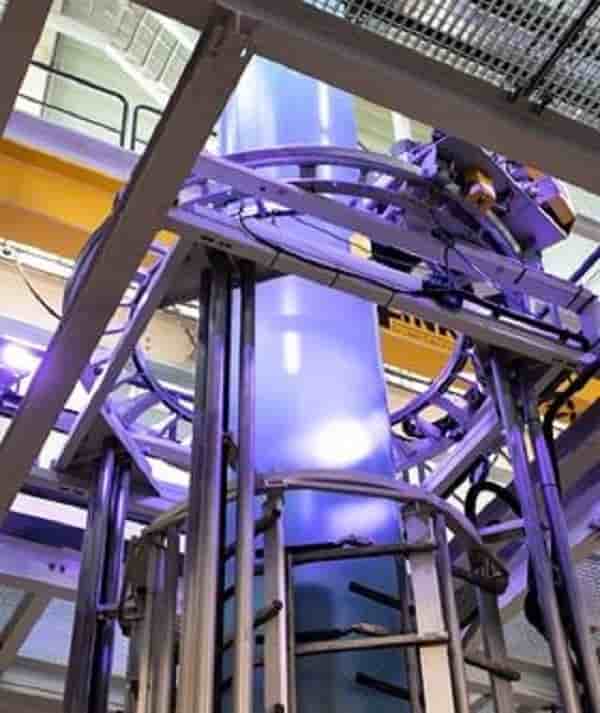
-GCR accelerates investment with new recycling plant to support circular economy
GCR Group has announced the plan to open a new dedicated recycling plant in Castellet i La Gornal, Barcelona, Spain, enhancing the group’s capability to serve increased global demand for its CICLIC range of recycled polyolefins (R-polyolefins), said the company.
The 200,000 Tonnes (200kT) plant, commissioning in 2023, when fully operational in 2025, will be one of the largest of its kind and is a significant step for the group; the capacity for CICLIC combined with that for the GRANIC® range of sustainable mineral-filled masterbatches and compounds will reach 500kT. GCR has a global reach, exporting 85% of its sales to over 100 countries.
GCR strongly believes collaboration on the developing of new products and applications is essential to accelerate the circular economy. The company hosts the ‘co-creation’ process across the value chain, where brand owners, converters, and suppliers can come together to practically test ideas and create precisely-defined sustainable solutions.
When brand owners think about using recycled plastics, they are often concerned about issues such as consistency of supply, traceability and whether the mechanical performance can match the virgin polymers they currently use. For many development engineers, reaching future internal and external sustainability targets is increasingly challenging. However, GCR’s existing CICLIC up-cycled products and ‘co-creation’ approach to customisation can solve these problems.
The CICLIC -polyolefins are based on up-cycling fully traceable waste streams and can deliver similar and consistent material properties as the virgin plastic. By replacing virgin plastic with these grades, Carbon Footprint certification can be 60-80% lower without compromising performance and quality. GCR believes companies facing sustainability challenges can find the answers through GCR’s products and long experience.
GCR’s extensive experience in polymer materials technology helps develop customised solutions in partnership with suppliers and end customers in a collaborative partnership. The new production plant is complemented by a recently opened Innovation Hub with ‘Co-creation’ space, enabling the development of new formulations and the production and testing of compounds on a pilot plant.
The new plant investment provides sufficient capacity to address high-volume demands in applications such as rigid and flexible packaging, automotive, construction and home and garden markets. In addition, GCR carries out toll manufacturing for food contact applications using advanced recycling technology, enabling impurity-free materials and certified to EuCertPlast.
